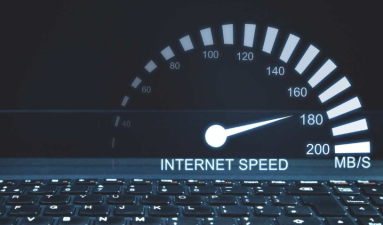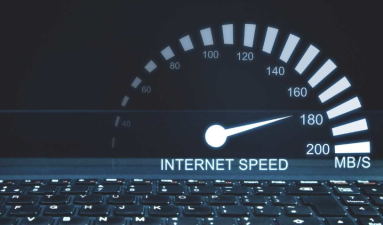
Have you ever experienced this phenomenon? When streaming at 1080p resolution, the video playback is smooth. But when the resolution switches to 4K, the video occasionally stutters due to buffering, making the viewing experience less enjoyable.
How Much Bandwidth Do Different Resolutions Require?
Whether you're using a brand-new streaming device or some older device rocking a shiny new OLED TV, you certainly want the best streaming experience.
To understand how much bandwidth you need to enjoy a smooth experience with your favorite streaming service, let's quickly understand the concept of video "bitrate."
What is "bitrate"?
- Bitrate is independent of, but related to, other measurements like resolution, frame rate, audio quality, and other components of the streaming video experience. Bitrate is a combination of all these factors, indicating the amount of data per second provided by the video source. It's also a good measure of how fast your connection needs to be for a pleasant experience.

If you've ever wondered why a Blu-ray movie looks better than the same movie streamed at the same resolution through Netflix or other streaming providers, the answer is different bitrates. Blu-ray Discs can deliver 3-5 times the bitrate of compressed streams like Netflix, which means more data (and a higher-quality picture).
Streaming providers work diligently, using various compression techniques to reduce bitrates while maintaining quality. However, there's no such thing as a free lunch; these are the average minimum requirements for smooth, stutter-free streaming at various resolutions.
Recommended Minimum Bandwidth for Streaming Resolution: Standard Definition (SD/480p) 1 Mbps; High Definition (HD/720p) 3 Mbps; High Definition (HD/1080p) 5 Mbps; 4K (UHD/2160p) 15+ Mbps; 8K (UHD/4320p) 50+ Mbps.
It will take some time for 8K content to become widely available, but SD, HD, and 4K UHD content are already widely available.
4K resolution isn't just for home theaters
- From a penetration perspective, the adoption of UHD 4K resolution hasn't been very widespread, with a significant portion of users still primarily using 1080p and 2K displays. According to data from Guanyan Report Network, 4K monitor sales have remained remarkably stable for the past four years, but the growth rate has been declining significantly. This suggests that consumers are focusing their attention on ultra-high definition, a period when ultra-high definition (UHD) was still "out of reach."

For many ordinary people, 4K represents the pinnacle of high resolution, and its default usage is often for home theaters. However, there are many other applications.
- 4K TVs are a common choice. On the one hand, the large screen offers a superior viewing experience compared to a monitor, and on the other hand, screen projection allows for playback of UHD content stored on other devices.
- Beyond audio and video, gaming is also a key application area for 4K resolution. Given the current level of PC hardware performance, delivering exquisite gaming graphics at 4K, even at high refresh rates, is no longer a challenge. Improving image quality is a constant pursuit for gamers. Furthermore, VR gaming, a subcategory of the genre, places even more stringent visual requirements on high resolution.
Filmmakers and videographers are also heavy users of 4K resolution. Photographers and videographers often use 4K cameras to capture higher-resolution images or videos. This is of great help for post-production and editing, and the ultra-high-definition images also allow enough details to be retained in the basic film.
